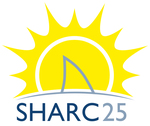the EMPA (Swiss Federal Laboratories for Materials Science and Technology), the universities of Luxembourg (LU), Rouen (F), Parma (I) and Aalto (FIN), the IMEC (Interuniversitair Micro-Elektronica Centrum VZW in B), the HZB (Helmholtz-Zentrum Berlin für Materialien und Energie in D), the International Iberian Nanotechnology Laboratory INL (P), Flisom AG (CH), and Manz CIGS Technology GmbH (D). The idea behind this EU project is to pool these eleven organizations‘ multidisciplinary skills in a bid to develop better cells.






